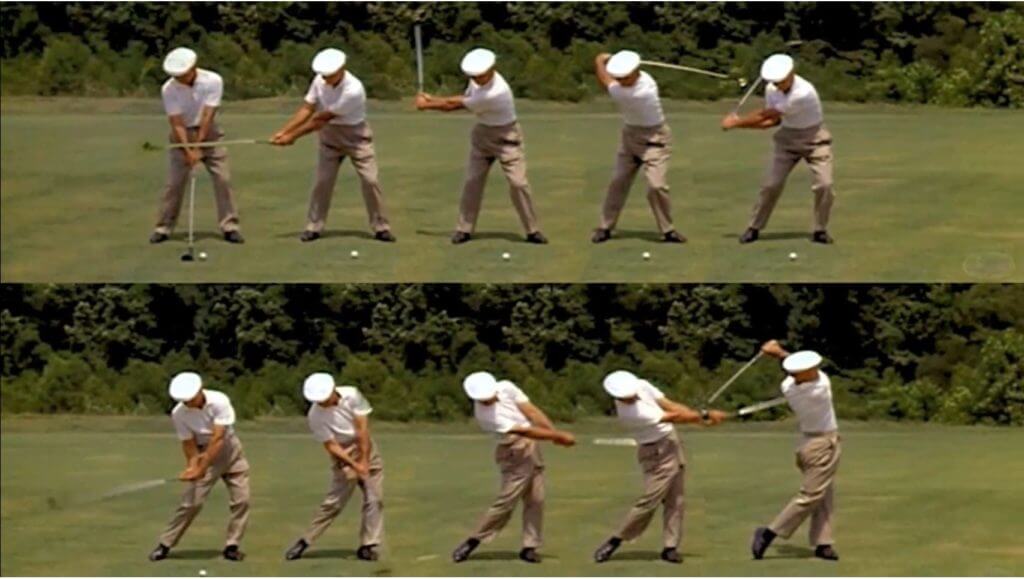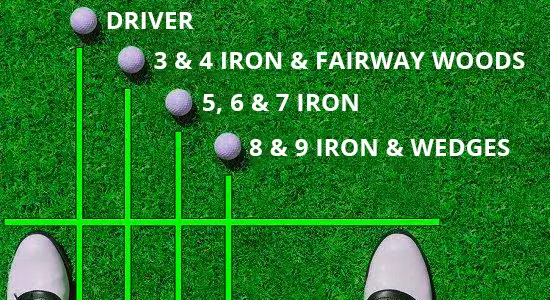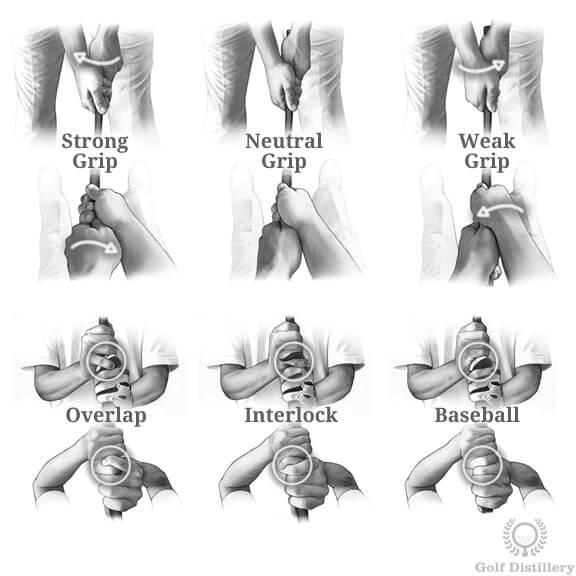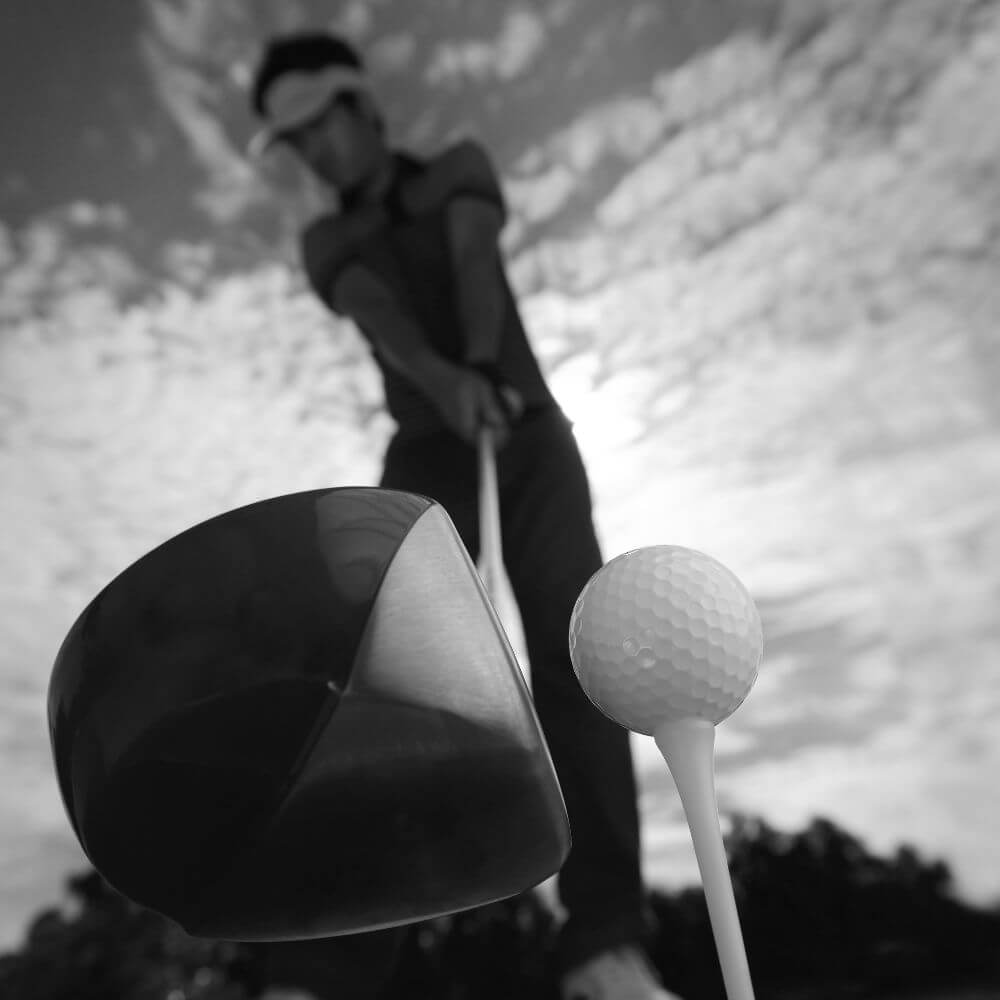Content Summary
Driving the golf ball is one of the game's most exciting and challenging parts. The feeling you get when you out-drive your opponents is unmatched. Also, a great drive can set up an easier approach shot and lead to lower scores.
However, consistently hitting long, straight drives takes practice and proper technique. Hitting a golf ball straight is not as easy as it sounds.
In this article, I am going to break down everything you need to know as a beginner to hit the driver like a pro.
Your Tee Shot Sets the Stage for Scoring
Driving the ball into the fairway provides an ideal start to lower scores. But a bad drive can put you at a major disadvantage and can shake your confidence.
Finding the right driver to maximize distance and control is vital. With so many options, it's essential to understand the key features that separate one driver from the next. I will expand on this subject in another article.
A great first step is to visit your local golf store and have them review your current driver setup. After watching you hit the driver, the pros there can analyze your specs, swing speed, and impact conditions. They will then make recommendations on optimal driver loft, shaft flex, and other custom adjustments to help maximize your distance and accuracy.
When I had my club fitting we determined the best driver for me was a TaylorMade SIM. I saw an improvement right away on the golf course. But since my swing continues to change through ongoing improvements, I'm probably due for a new fitting.

Why is Hitting the Golf Ball Straight So Important
Before diving into the specifics, it's important to understand why driving is such a critical part of golf. Here are some of the main reasons: Driving the ball straight and far off the tee sets up better approach shots, allows you to reach par 5s in two, takes the pressure off long second shots, and leads to lower overall scores.
Sets Up Approach Shots
If you can drive a golf ball straight and onto the fairway it gives you the best angle and lies for your approach shot to the green. You'll be able to hit short irons and wedges into par 4s and set up mid irons into par 5s.

Allows You to Reach Par 5s in Two
Longer drives mean you'll have a chance of reaching par 5s in two shots. This opens up opportunities for eagles and birdies.
Takes Pressure Off Second Shots
Driving the ball well takes the pressure off having to hit difficult long-second shots from the rough. You can play more aggressively knowing you have an easier upcoming shot.
Lowers Scores
Consistently driving the ball long and straight leads to lower scores. You avoid big numbers by staying out of trouble, and by reaching more greens in regulation.
Setting up to Hit a Driver for Success
Proper setup is crucial for effective driving. Here are the key elements: stance width and alignment, ball position, posture and flex, weight distribution, and using the right club length.
How High to Tee a Golf Ball
- Tee the ball so it is halfway or just a bit lower than half-way above the golf club face. This will help you hit up on the ball.

Stance Width and Alignment
- Stance Width: The stance width refers to the distance between your feet as you address the ball. For most golfers, standing about shoulder-width apart is recommended. This width provides a stable base, promoting balance and control throughout the swing. It allows for proper weight transfer during the swing, which is essential for generating power and maintaining consistency.
- A stance that is too narrow might lead to instability and hinder your ability to generate sufficient power, while a stance that is too wide could limit your mobility and negatively affect your swing mechanics. Thus, finding the right stance width is crucial to achieving a comfortable and balanced position.

- Alignment: Proper alignment involves positioning your feet, hips, and shoulders parallel to the target line. For right-handed golfers, this means aligning the feet and body left of the target line (pointing slightly towards the left of the target).
- Correct alignment ensures that the clubface is square to the target at impact, which is essential for hitting straight shots. Aligning yourself left of the target helps create a natural swing path that allows for an inside-out or slight draw trajectory (for right-handed golfers) – a ball flight favored by many players due to its added distance and control.
Ball Position
- Ball Position is a critical element in golf that profoundly influences the trajectory and contact of your shots. Finding the right ball position for each club in your bag is essential to optimize distance, accuracy, and consistency.
- Effect on Ball Flight: For the driver, placing the ball off the inside of your left heel (for right-handed golfers) promotes consistent ball striking and desired ball flight characteristics.
- Full Shots: With irons, hybrids, and fairway woods, positioning the ball just ahead of the center of your stance encourages a descending strike, ensuring crisp contact and generating the necessary backspin for a controlled flight. This setup aids in avoiding thin or fat shots that can lead to loss of distance and accuracy.
- Wedges and Bunkers: For shots with wedges and in bunker play, ball position becomes even more critical. Placing the ball slightly forward for sand shots helps the club enter the sand at the right angle and allows for an explosion shot. When hitting wedge shots, finding the correct ball position ensures you strike the ball first, preventing excessive digging or bouncing.

Weight Distribution
- Balance and Stability: Even weight distribution between both feet is essential to establish a stable and balanced setup. Maintaining equilibrium helps you stay in control during the swing, reducing the risk of swaying or losing your balance during the backswing and downswing. By having a solid foundation at address, you'll have a better chance of executing a smooth and controlled swing motion.
- Establishing the Correct Swing Plane: Proper weight distribution plays a pivotal role in establishing the correct swing plane. When the weight is evenly distributed or slightly favoring the back foot, it encourages a more centered turn during the backswing. This centered turn promotes a more on-plane swing, reducing the likelihood of coming over the top or swinging too steeply, leading to slices or pulls.
- Aiding in Solid Contact: Proper weight distribution contributes to striking the ball consistently and with solid contact. When your weight is distributed evenly, or slightly favoring the back foot, you are less likely to sway or lunge towards the ball during the swing, which could result in inconsistent strikes and mishits. By maintaining a steady and balanced stance, you increase the likelihood of hitting the ball flush and achieving the desired ball flight.
Gripping the Club
How you grip the club is vital for power and control. Here are some key grip tips: using a neutral vs strong grip, finding the right overlap or interlock, maintaining proper pressure without tension, and double-checking alignment before each drive.

Neutral vs Strong Grips
- Start with a neutral grip placing both thumbs down the center of the shaft. Rotate to a stronger grip (hands turned slightly right) to help close the clubface.
Overlap vs Interlock
- Try both an overlapping and interlocked grip to see what's most comfortable. Overlap typically offers the most power.
Pressure and Tension
- Grip the club firmly but avoid tension in your arms and hands. This leads to restricted mobility.
Double Check Alignment
- Re-check that the face is square before each drive to maximize accuracy.
The Golf Swing
Mastering the mechanics of the full golf swing is how you learn to maximize distance. The key elements are a full shoulder turn backswing, a powerful transition by firing the hips, releasing the club lag through impact, and a full finish follow-through.
Backswing
- Keep your lower body quiet while turning your back to the target with your shoulders and arms. Bring the clubhead up and around your body.
Transition
- Start the downswing by firing your hips towards the target while keeping your back facing the target as long as possible. This builds power.
Downswing
- Release your lag and whip the club through impact, keeping your arms extended. The club head should reach maximum speed just after impact.
Follow Through
- Allow your body to fully rotate through the shot, with the club wrapping around behind your head. This ensures you extract all the power.
Tempo and Rhythm
- Swing at 3/4 speed on the backswing, then accelerate through the downswing. A smooth tempo leads to consistent ball striking.
Common Golf Drive Errors
These are some of the most frequent mistakes golfers make, and how to fix them:
Slicing
Cause: Clubface is open relative to the swing path at impact.
Fix: Strengthen grip, align clubface, and swing more left.
Hooking
Cause: Clubface closed relative to swing path.
Fix: Weaken grip, align clubface, swing more right.
Low drives
Cause: Striking down or hitting the bottom of the ball.
Fix: Tees higher, ball more forward, swing more upwards.
High drives
Cause: Hitting the ball above center.
Fix: Lower tee height, ball back in stance, don't lift up.
Drills to Improve Driving
Practicing the right drills and techniques can rapidly improve your driving skills: alignment stick drills, impact bag drills, draw drills, mirror drills, and half swing drills are all effective ways to ingrain proper driving mechanics.
Alignment Stick Drill
Place an alignment stick on the ground through the ball, parallel to your target line. The goal is to hit drives without touching the stick.
Impact Bag Drill
Hit an impact bag to groove the feeling of compressing the ball at driver swing speeds. This engrains correct driving mechanics.
Draw Drill
Position your body, clubface, and swing path to promote a draw. Work on repeating this shape on the range to control ball flight.
Mirror Drill
Set up a mirror behind you to monitor your stance, grip, alignment, and swing positions. Check for proper positions before each drive.
Half Swing Drill
Take shortened half swings and make solid contact with the ball. This trains you to strike the sweet spot consistently.
Choosing the Right Driver
Your equipment plays a major role in distance and control. Consider these factors:
Loft
Higher lofts (10-12°) launch the ball easier for slower swing speeds. Lower lofts (9-10.5°) maximize distance for faster speeds above 100 mph.
Shaft Flex
Stiff and extra-stiff shafts are best suited for swing speeds above 90 mph. Regular or senior flex is preferable for speeds below 90 mph.
Adjustability
Many modern drivers allow you to tweak loft, lie angle, and shot shape. Get fitted so you can optimize launch conditions.
Clubhead Size
Larger clubheads (460cc+) offer more forgiveness on mishits. Smaller heads suit precise swingers seeking workability.
Brands
All major brands make quality drivers. Test different models to see which looks, feels, and performs best for your swing.
Final Tips for Driving Excellence
Keep these last tips in mind on your quest for longer, straighter drives:
- Stay loose and relaxed to generate maximum clubhead speed.
- Let the club do the work. Don't try to muscle or steer the ball.
- Swing within yourself. Don't overswing chasing extra yards.
- Play for the middle and accept some dispersion. Don't try to be too perfect.
- Stick with the fundamentals. Even tour pros revisit basics like grip, stance, and alignment.
Conclusion
Mastering the art of the drive takes practice and persistence. But with proper coaching and repetition of sound technique, you can hit drives with the best players in the world. Use this guide as a roadmap to improve your driving distance, accuracy, and consistency.
Driving the golf ball is a critical skill in the game that takes proper technique and practice to master. Setting up with the right stance, grip, and alignment is key for consistency.
During the swing, focus on making solid contact by transferring your weight and releasing the club at the right moment through impact. common errors like slicing and hooking can be fixed by adjusting your grip, aim, or swing path.
Work on drills like the alignment stick and impact bag to ingrain good mechanics. Choosing the right driver loft, shaft flex, and clubhead size can also optimize distance and control.
With guidance from this complete driving guide, you'll gain the knowledge and skills to hit long, accurate tee shots and lower scores. Mastering driving fundamentals is crucial to developing an excellent all-around golf game.
Frequently Asked Questions - How to Drive a Golf Ball
What Is the Average Distance for a Beginner Golfer?
The average distance for a beginner golfer varies depending on several factors such as age, gender, skill level, and club used.
- Driver: Beginner female golfers hit their drives an average of 119.8 yards, while beginner men golfers with handicaps over 21 drive an average of 176.6 yards
- Irons: According to an estimated beginner driver golf club distance chart, beginner golfers can hit their 6-iron around 130-150-170 yards, 7-iron around 120-140-160 yards, 8-iron around 110-130-150 yards, and 9-iron around 95 yards
- Fairway woods: The average fairway wood distance for all golfers is 203 yards, but the range varies between 182 and 220 yards. The distances will depend on what fairway wood you’re using, whether you’re using a tee, and your swing speed
How do I properly drive a golf ball?
To drive a golf ball effectively, start by positioning it on a tee. Take a grip on your golf club, making sure your arms are straight and relaxed. Next, line up your shot by aiming at your desired target. As you swing, remember to keep your eye on the ball, maintain a smooth and controlled swing path, and make solid contact with the ball. Strive to hit the ball straight and drive it toward your target.
What is the best way to hit a driver?
The key to hitting a driver successfully is to ensure a proper setup and swing. Position the ball forward in your stance, towards your front foot. Focus on maintaining a smooth, sweeping swing path and generating clubhead speed. Keep your head steady and your eye on the ball throughout the swing. By doing so, you can increase your chances of hitting the ball farther and straighter.
How can I improve my golf swing to drive the ball longer?
Improving your golf swing can help you hit the ball with more distance. Work on your swing path, aiming to swing from the inside to out, which can lead to increased power and accuracy. Also, try to generate more clubhead speed by using your body effectively and creating a coiled-up motion in your backswing. Practice regularly, focusing on consistent and controlled swings, to improve your driving distance over time.
What should be the position of the ball when driving?
When driving a golf ball, it is generally recommended to position the ball slightly forward in your stance, closer to your front foot. This allows for a sweeping motion as you make contact with the ball, helping you to hit the ball with more power and achieve a straighter shot. Experiment with different ball positions to find what works best for you and your swing.
How can I hit the golf ball straight every time?
How can I hit the golf ball straight every time?
To hit the golf ball straight consistently, focus on your alignment, grip, and swing technique. Ensure that your feet, hips, and shoulders are aligned with your intended target. Maintain a relaxed and neutral grip on the club. As you swing, strive for a smooth and controlled motion, avoiding any excessive movements. Practice regularly to develop muscle memory, which will ultimately help you hit the ball straighter with more consistency.
Are there any tips for increasing driving distance?
Absolutely! Increasing driving distance can be achieved through various methods.
- Increase clubhead speed by improving flexibility and strength through exercises and drills to generate more power.
- Optimize your swing mechanics - things like creating lag and efficiently transferring weight can translate to significant extra yards.
- Use a driver with a lower loft and a shaft that matches your swing speed to maximize distance.
- Tee the ball higher to allow an upward angle of attack and more carry.
- Position the ball slightly forward in your stance to strike it on the upswing.
- Consider equipment fitted specifically for your swing rather than off-the-shelf clubs.
- Swing at about 80% effort instead of trying to kill the ball. Smooth and controlled beats wild and tense.
- Maintain lag in your downswing as long as possible before unleashing through the ball.
- Ensure you have the right balance of flexibility and stability for optimal torque and force.
- Work on consistent solid contact across the whole face - mishits rob you of distance.
- Improve your swing attack angle and impact conditions through launch monitor analysis.
Thank you for visiting, and we hope to see you back soon!








